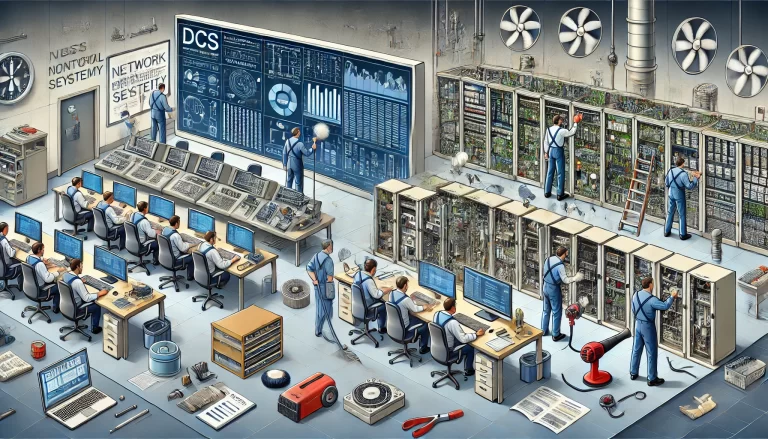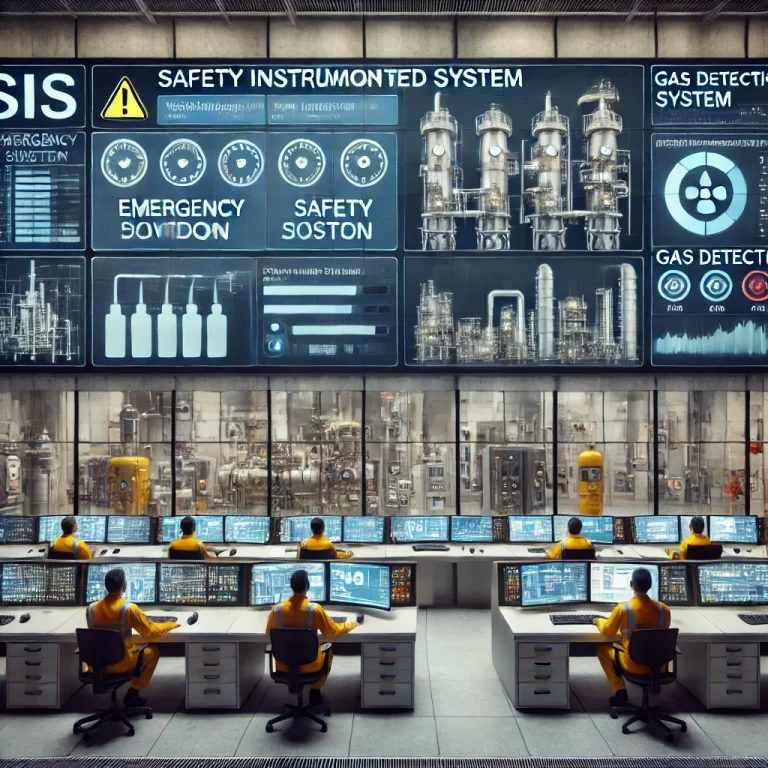1. Introduction
In industrial automation and process safety systems, the Distributed Control System (DCS) and Safety Instrumented System (SIS) are vital components for maintaining operational stability and ensuring personnel and environmental safety. Regular inspection and maintenance of both systems are essential to avoid equipment failure, process upsets, and safety incidents. This article outlines the typical inspection cycles and maintenance tasks for DCS and SIS, based on industry best practices and standards such as IEC 61511.

2. DCS (Distributed Control System) Inspection Cycle
The DCS is responsible for routine process control, data acquisition, and operator interface. Inspection focuses on system health, communication integrity, and backup management.
Routine Inspection Tasks and Frequency
| Task | Recommended Frequency | Description |
|---|---|---|
| Controller status check | Daily or Weekly | Monitor CPU load, controller status, and fault LEDs. |
| Power supply & UPS | Weekly or Monthly | Check voltage levels, backup battery condition, and UPS alarms. |
| Operator station (HMI) performance | Weekly | Ensure graphic displays are responsive and software is functioning correctly. |
| Communication network health | Monthly | Verify redundancy, communication quality, and detect dropped packets. |
| Alarm & historical data logging | Monthly | Confirm logging functionality, data completeness, and time synchronization. |
| Configuration backup | Monthly | Back up control logic, parameters, and HMI configurations to secure storage. |
| Software/firmware update | Quarterly or Semi-Annually | Apply updates as necessary to maintain cybersecurity and performance. |
| I/O module status check | Quarterly | Inspect signal channel status, LED indicators, and connection integrity. |
| User access and permissions review | Quarterly | Audit user accounts and ensure only authorized personnel have access. |

3. SIS (Safety Instrumented System) Inspection Cycle
SIS is designed to bring a process to a safe state when predefined conditions are violated. The inspection cycle must meet Safety Integrity Level (SIL) requirements, with a strong focus on functional testing and reliability assurance.
Routine Inspection Tasks and Frequency
| Task | Recommended Frequency | Description |
|---|---|---|
| Safety controller status check | Weekly or Monthly | Ensure controller is in RUN mode, with no faults or error indications. |
| I/O module integrity check | Monthly | Verify wiring, monitor for signal loss, drift, or short circuits. |
| Safety logic test (proof testing) | Quarterly | Validate logic functions per SIL requirements through simulation or actual testing. |
| Critical interlock test (e.g., ESD system) | Quarterly or Semi-Annually | Test emergency shutdown systems, trip logic, and valve actuation. |
| Redundant power supply check | Monthly or Quarterly | Ensure redundant paths operate correctly and automatic switchover works. |
| Alarm and event log audit | Monthly | Confirm system logs all safety-related events for traceability. |
| SIL verification | Annually | Perform formal SIL verification using PFDavg calculations and test records. |
| Emergency response drills | Semi-Annually or Annually | Conduct safety drills involving SIS trips to evaluate personnel preparedness. |

4. Key Differences in Inspection Philosophy
| Aspect | DCS | SIS |
|---|---|---|
| Primary Function | Process control | Safety shutdown & risk mitigation |
| Inspection Focus | Stability, communication, performance | Reliability, functionality, compliance |
| Regulatory Requirement | General maintenance best practices | Governed by IEC 61508 / IEC 61511 |
| Proof Testing | Not required | Mandatory based on SIL level |

5. Conclusion
The effective maintenance of DCS and SIS systems requires structured inspection routines tailored to each system’s role and criticality. While DCS inspections prioritize operational continuity and data reliability, SIS inspections must meet rigorous safety and compliance requirements. Implementing a documented maintenance schedule and performing timely inspections can significantly reduce system downtime and improve plant safety performance.
For plants with higher SIL levels or hazardous materials, more frequent or detailed testing may be required. Integration of digital maintenance logs and predictive diagnostics can further enhance the effectiveness of these inspections.
